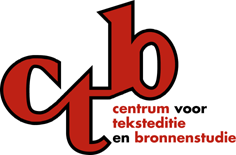| <layer> |
Identifies each different physical layer the encoder wants to discern. |
| Attributes |
| In addition to global attributes:
|
| type |
Describes the type of physical layer. |
|
Datatype: CDATA
|
|
Values: Any convenient typology can be used. Sensible values
may be ‘post-it’, ‘sticker’, etc.
|
|
Default: #IMPLIED
|
|
| Example |
<text>
<body>
<p>The next word <layerStart layer="l2" id="ls1" />will appear
in a distinct physical area.</p>
<p>If so desired, a new paragraph will complicate matters, as
well as a reference to <name>Stijn <layerEnd layer="l2" id="le1" />
Streuvels</name>, and a couple of new <add hand="hand2">tri
<layerStart layer="l2" id="ls1b" />cky!</add> boundary crossings
to make the story <seg rend="90">com<layerEnd layer="l2" id="le1b" />plete.
</seg></p>
...
</body>
<back>
<join targets="ls1 le1 ls1b le1b" result="div" desc="physical layer" />
</back>
</text>
|
| Note |
Although the type attribute is not obligatory,
DALF encoders are strongly encouraged to use it on each layer
definition. Furthermore, although the global id
attribute is never obligatory, it must be
present on each <layer> element, in order to provide a
reference point for the <layerStart /> and <layerEnd /> elements
that signal the boundaries of those different physical layers in
the document.
|
| Content |
May contain additional paragraphs. |
| Parents |
layerList |
| Children |
p |
| Declaration |
<!ELEMENT layer %om.RR;
(p)*>
<!ATTLIST layer
%a.global;
type CDATA #IMPLIED> |
| See further |
6. Correlations of logical and physical structures |
